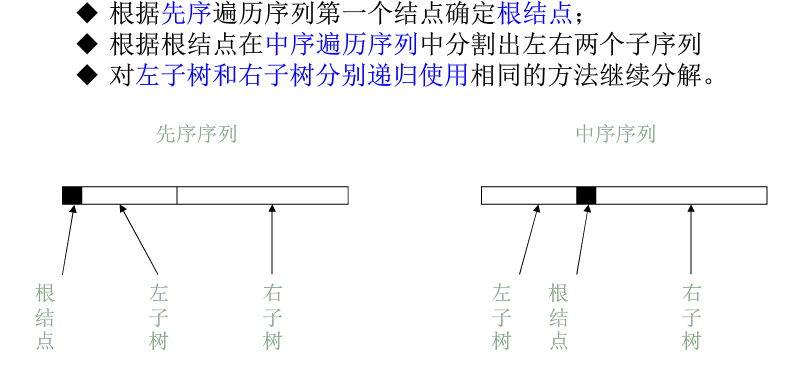1.求二叉树中叶子节点的个数(并打印)
设该树中的叶子数为n0个.该树中的总结点数为n个,则有:
n=n0+n1+n2+…+nK (1)
n-1=0*n0+1*n1+2*n2+…+K*nK (2)
联立(1)(2)方程组可得:
叶子数为:n0=1+0*n1+1*n2+2*n3+...+(K-1)*nK
则对二叉树有;n0 = n2+1
就相当于求出了叶子节点n0的数,就知道了这颗二叉树中n1,n2的数目
可以在遍历算法中增加检测条件:左右子树是否都为空
void PreOrder(node *root) { if (root==NULL) return; else if (!root->lch&&!root->rch) { //printf("%c", root->data); n0++; PreOrder(root->lch); PreOrder(root->rch); } }
2.求二叉树的高度

int depth(node *t) { if(t==NULL) return 0; int l = depth(t->lch); int r = depth(t->rch); return l > r ? l+1 : r+1; }
3.由两种遍历确定二叉树
必须要有中序遍历才能确定一颗二叉树

以先序和中序遍历序列确定二叉树为例:

node *create(char *pre, char *in, int num) { if (num==0) return NULL; int i = 0;//不要忘了初始化 while (i<num&&in[i]!=pre[0]) i++;//查找根节点在中序的位置 int lnum = i, rnum = num-i-1; node *root = (node*)malloc(sizeof(node)); root->data = pre[0]; root->lch = create(&pre[1], &in[0], lnum); root->rch = create(&pre[i+1], &in[i+1], rnum); return root; }
后序和中序遍历序列确定二叉树和前面的差不多,有时间我再补上来